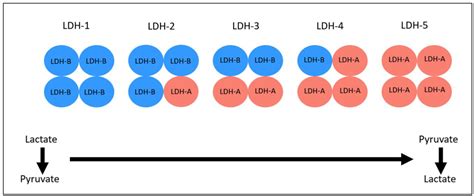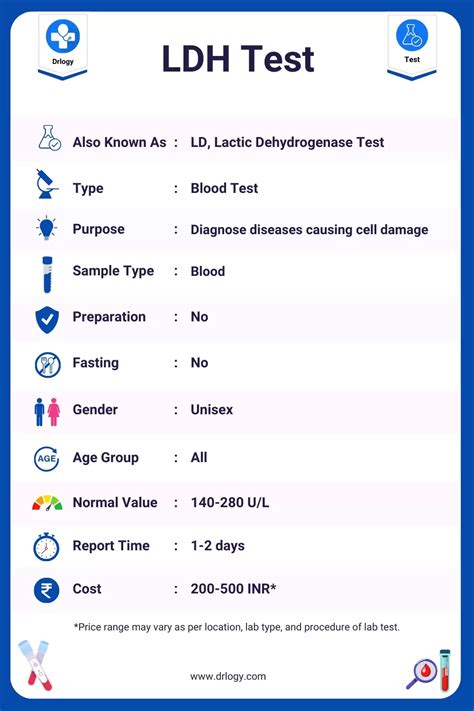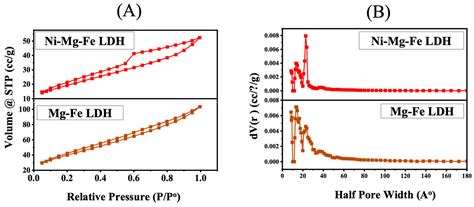Intro
Discover what LDH is, a lactate dehydrogenase enzyme, and its role in energy production, cellular respiration, and disease diagnosis, including lactate threshold and metabolic disorders.
Lactate dehydrogenase, commonly referred to as LDH, is an enzyme found in nearly all living cells. It plays a crucial role in the process of cellular respiration, where it catalyzes the conversion of lactate to pyruvate, and vice versa. This enzyme is vital for the production of energy in cells, particularly under conditions where oxygen is scarce. LDH is composed of four subunits, which can be a combination of two different types: M (muscle type) and H (heart type). The combination and proportion of these subunits can vary, leading to the existence of different isoenzymes of LDH, each with slightly different properties and tissue distributions.
The significance of LDH extends beyond its role in energy production. Elevated levels of LDH in the blood can indicate tissue damage or disease, as cells release their contents, including LDH, into the bloodstream when they are damaged or destroyed. This makes LDH a useful marker in clinical settings for diagnosing and monitoring a variety of conditions, including liver disease, heart disease, and certain types of cancer. For instance, in the case of a heart attack, the damage to heart muscle cells can lead to an increase in LDH levels in the blood.
The measurement of LDH levels and its isoenzymes can provide valuable information about the extent and location of tissue damage. Different isoenzymes of LDH are predominant in different tissues, which means that the pattern of LDH isoenzyme elevation can help in identifying the source of the damage. For example, LDH-1 is predominantly found in the heart, while LDH-5 is more abundant in the liver and skeletal muscle. Therefore, an increase in LDH-1 might suggest heart damage, whereas an increase in LDH-5 could indicate liver or muscle damage.
Understanding LDH and Its Role in the Body

LDH's role in the body is multifaceted, and its importance cannot be overstated. It is involved in the metabolism of glucose, facilitating the conversion between lactate and pyruvate. This process is crucial for energy production, especially in tissues that have high energy demands or those that are subject to conditions of low oxygen availability, such as during intense exercise. Moreover, LDH's ability to catalyze the conversion in both directions makes it a key enzyme in maintaining the balance of metabolic intermediates within the cell.
The clinical significance of LDH is further underscored by its application as a tumor marker. Elevated levels of LDH have been associated with various types of cancer, including testicular cancer, lymphoma, and melanoma. The level of LDH can also provide prognostic information, with higher levels often correlating with a poorer prognosis. This makes LDH a valuable tool in the management of cancer, allowing for the monitoring of disease progression and response to treatment.
LDH Isoenzymes and Their Clinical Significance

LDH isoenzymes are formed by different combinations of the M and H subunits, leading to five main isoenzymes (LDH-1 to LDH-5). Each isoenzyme has a specific distribution in body tissues, which is crucial for diagnosing tissue damage. For example, LDH-1 is primarily found in heart muscle and red blood cells, while LDH-5 is predominantly located in the liver and skeletal muscle. The measurement of these isoenzymes can help in pinpointing the source of tissue damage, thus aiding in the diagnosis of specific diseases.
The distribution and characteristics of LDH isoenzymes also play a critical role in forensic science. LDH isoenzyme patterns can be used to identify the source of biological fluids found at crime scenes, which can be invaluable in criminal investigations. Furthermore, the stability of LDH isoenzymes under various conditions makes them reliable markers for post-mortem analysis, helping in the estimation of post-mortem intervals and the investigation of causes of death.
Applications of LDH in Medical Diagnosis
The applications of LDH in medical diagnosis are diverse and continue to expand with advancements in medical science. LDH levels are used to assess tissue damage and to monitor the progression of diseases. For instance, in the diagnosis of myocardial infarction (heart attack), an elevation in LDH levels, particularly LDH-1, can indicate heart muscle damage. Similarly, in liver diseases, an increase in LDH-5 levels can suggest liver damage.LDH as a Prognostic Indicator

Beyond its diagnostic value, LDH also serves as a prognostic indicator in various diseases. High levels of LDH have been associated with poorer outcomes in patients with cancer, indicating a more aggressive disease or a higher likelihood of metastasis. In the context of heart disease, elevated LDH levels after a heart attack can predict a higher risk of future cardiovascular events. This prognostic information is invaluable for guiding treatment decisions and for counseling patients regarding their expected outcomes.
The prognostic value of LDH is also evident in its application to monitor disease progression and response to treatment. In cancer therapy, for example, a decrease in LDH levels can indicate a positive response to treatment, while stable or increasing levels may suggest resistance to therapy. This allows for the adjustment of treatment strategies to improve patient outcomes.
LDH in Cancer Diagnosis and Management
LDH plays a significant role in the diagnosis and management of cancer. Elevated LDH levels have been observed in various types of cancer and are often associated with a poor prognosis. The level of LDH can also be used to monitor the response to cancer treatment. For instance, a decrease in LDH levels after initiating therapy can indicate a favorable response, whereas rising levels may suggest disease progression or resistance to treatment.Challenges and Future Directions

Despite the significance of LDH in medical diagnosis and prognosis, there are challenges associated with its measurement and interpretation. Variability in LDH levels among individuals and the influence of various factors such as age, sex, and physical activity can complicate the interpretation of results. Furthermore, the lack of standardization in LDH assays can lead to discrepancies in results across different laboratories.
Future research directions include the development of more sensitive and specific assays for LDH and its isoenzymes, which could improve the accuracy of diagnosis and prognosis. Additionally, the exploration of LDH's role in new areas, such as in the diagnosis of infectious diseases or in the monitoring of neurodegenerative disorders, could further expand its clinical utility.
Advancements in LDH Assays and Technology
Advancements in technology have led to the development of more sophisticated assays for measuring LDH levels. Point-of-care devices and automated analyzers have improved the speed and accuracy of LDH measurements, making it possible to obtain results in real-time or near-real-time. These advancements have significant implications for patient care, enabling healthcare providers to make timely and informed decisions.Conclusion and Future Perspectives

In conclusion, LDH is a multifaceted enzyme with crucial roles in cellular metabolism and significant implications in medical diagnosis and prognosis. Its applications span across various diseases, including cancer, heart disease, and liver disease, making it a valuable tool in clinical practice. As research continues to uncover new aspects of LDH's function and clinical utility, its role in healthcare is likely to expand, offering new avenues for diagnosis, treatment, and patient management.
The future of LDH research holds much promise, with potential applications in emerging areas of medicine. The development of more advanced diagnostic tools and the exploration of LDH's role in novel therapeutic strategies could further enhance its clinical importance. As healthcare continues to evolve, the significance of LDH as a diagnostic and prognostic marker is likely to endure, contributing to improved patient outcomes and advancements in medical science.
What is the normal range for LDH levels in the blood?
+The normal range for LDH levels in the blood can vary slightly depending on the laboratory and the specific assay used, but generally, it ranges from about 100 to 190 units per liter (U/L) for adults.
Can elevated LDH levels be caused by anything other than disease?
+Yes, elevated LDH levels can be caused by factors other than disease, including intense physical activity, high altitudes, and certain medications. It's also important to note that LDH levels can naturally fluctuate throughout the day.
How is LDH used in the diagnosis of cancer?
+LDH is used as a tumor marker in the diagnosis and management of certain types of cancer. Elevated levels of LDH have been associated with various cancers, and the level of LDH can provide prognostic information and help monitor the response to treatment.
We hope this comprehensive overview of LDH has been informative and helpful. Whether you're a healthcare professional, a researcher, or simply someone interested in learning more about this important enzyme, it's clear that LDH plays a vital role in our understanding of human biology and disease. We invite you to share your thoughts, ask questions, or explore further resources on this topic. Together, we can continue to advance our knowledge and improve patient care through a deeper understanding of LDH and its many applications.
